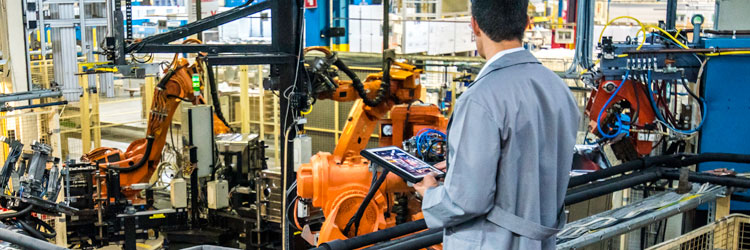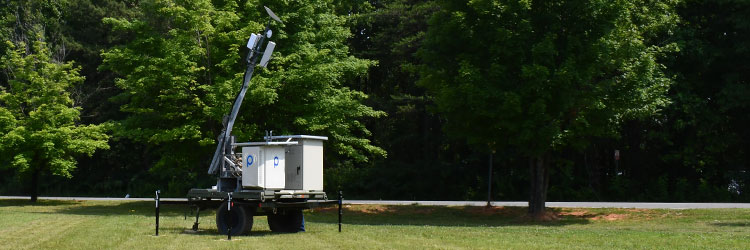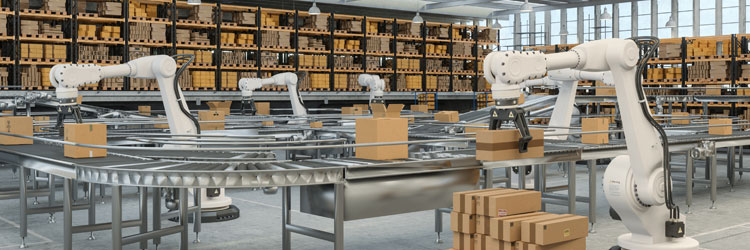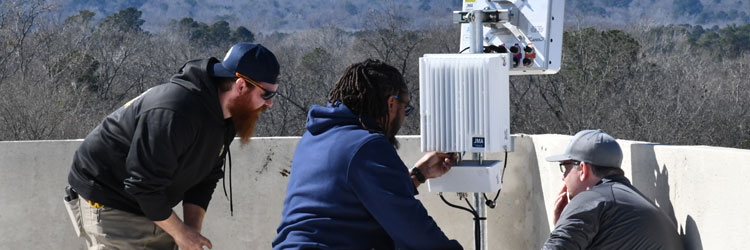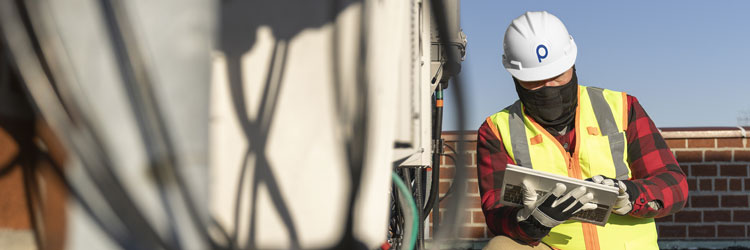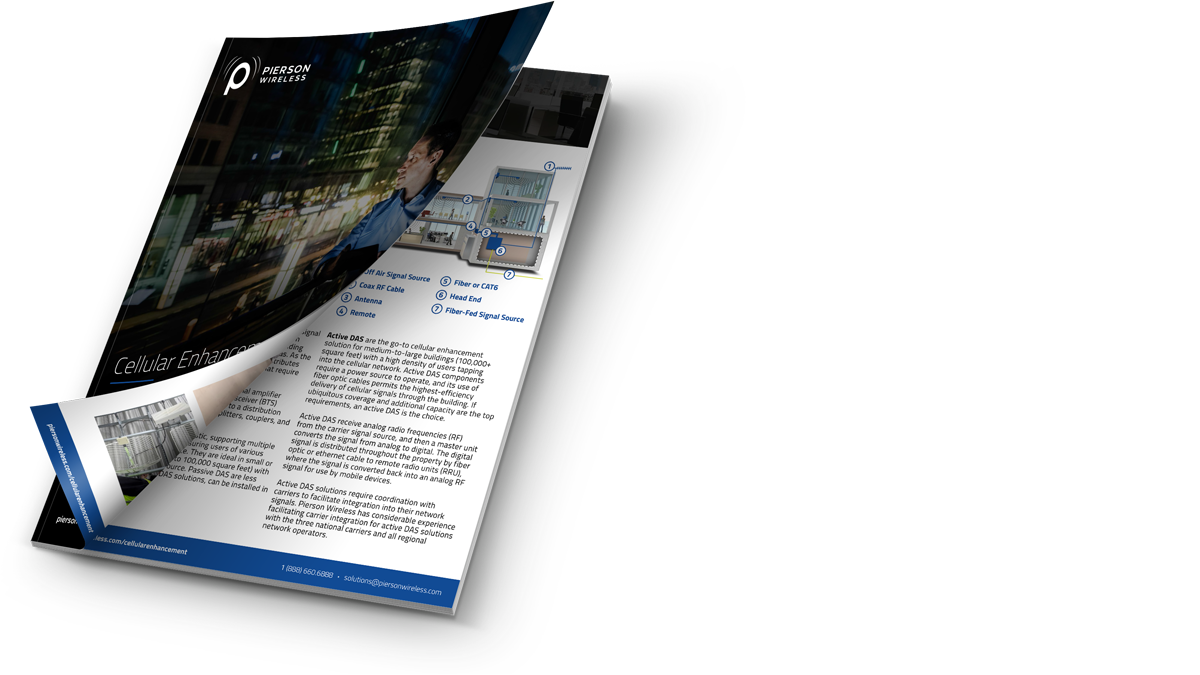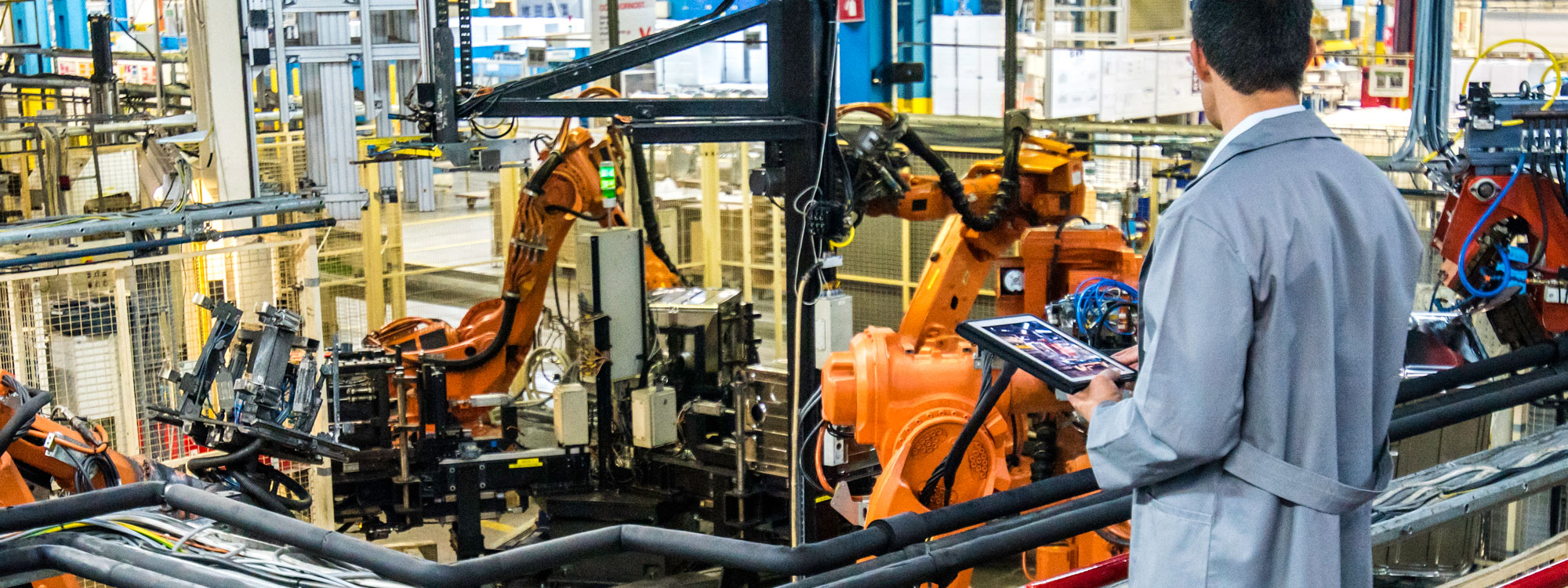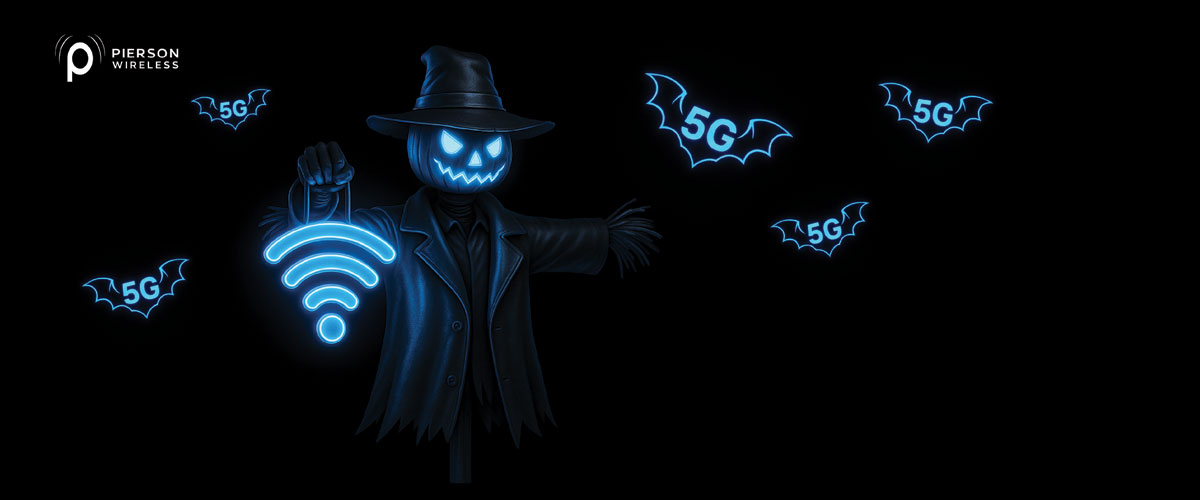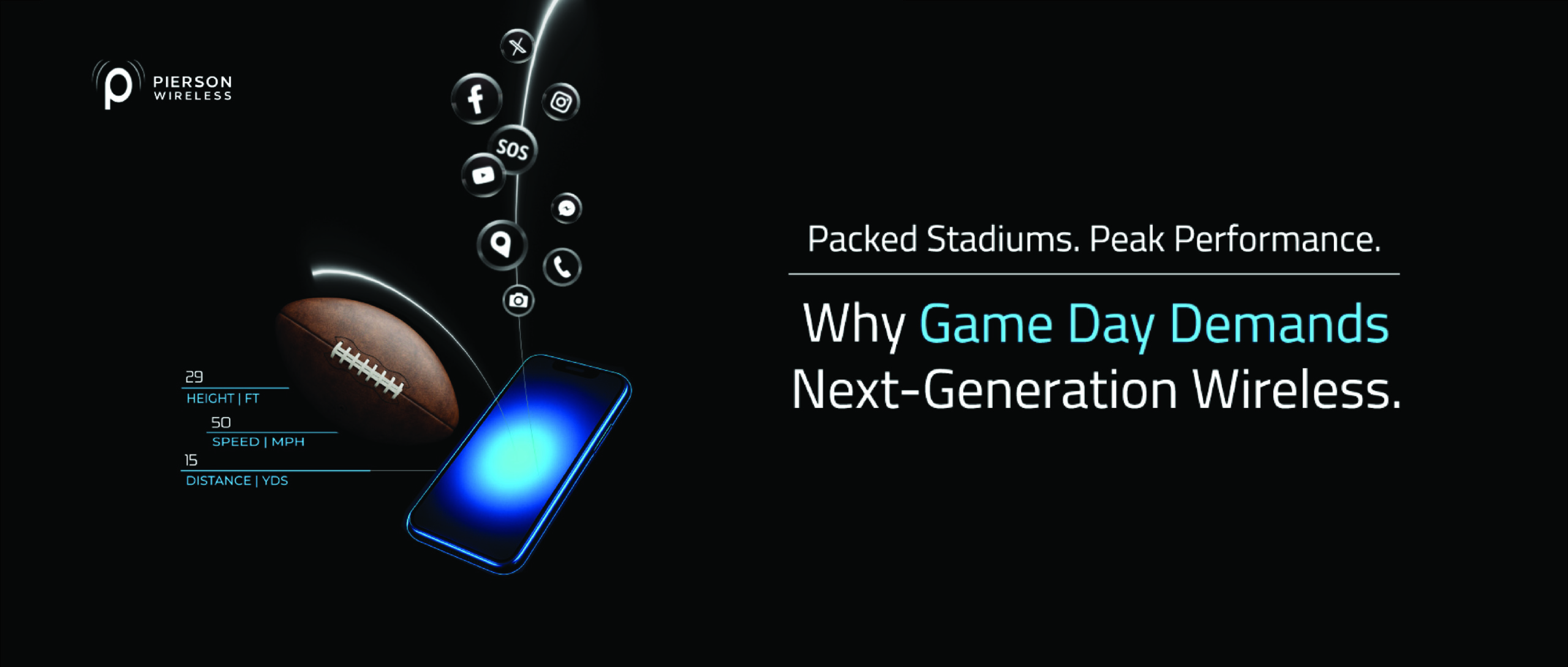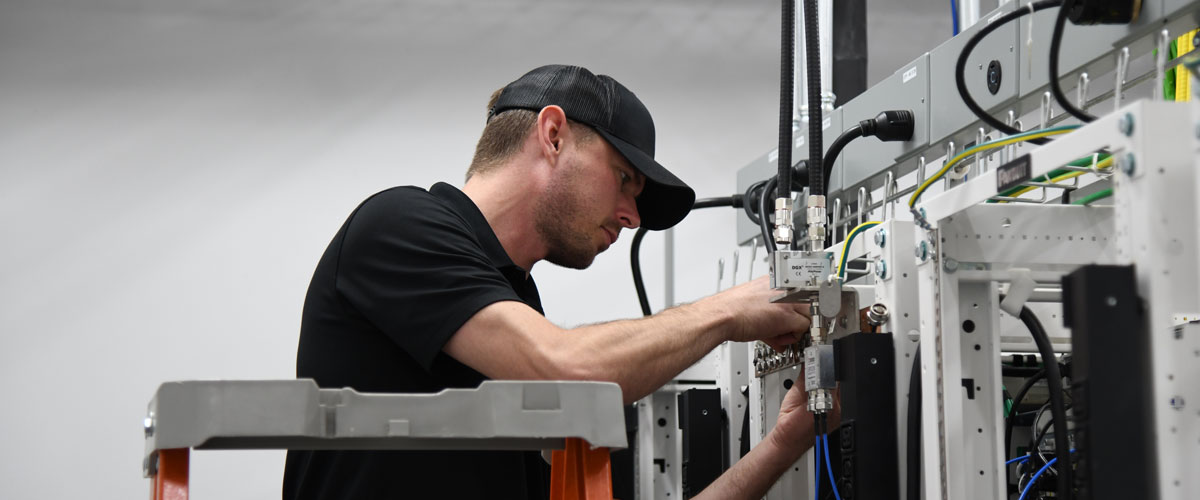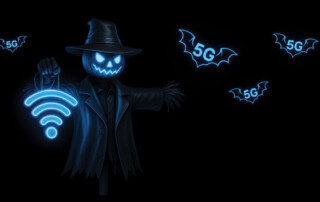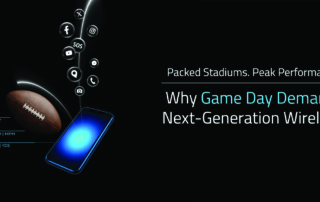What is a Distributed Antenna System?
Put simply, a distributed antenna system (DAS) is a wireless solution that provides reliable cellular communication within a defined space.
More specifically, a DAS is a network of spatially-separated antennas connected to a common signal source and distributed throughout a defined coverage area to support and enhance the transmission of public cellar network signals.
Why Deploy a DAS?
Interested in Cellular Enhancement / Distributed Antenna Systems?
Interested in Cellular Enhancement / DAS?
How Does a DAS Work?
Every DAS has two key elements – a signal source and a distribution system. There are three kinds of signal sources that receive cellular signals from mobile carriers, and they are (1) off-air antennas, (2) on-site base transceiver stations (BTS), and (3) small cells. Once the signal is secured from the carrier, it is distributed throughout the environment via different types of solutions, notably active, passive, small cell, or picocell distribution systems.
The choice of distribution system is driven by a number of factors:
- How big is the coverage area?
- How many devices and users are expected to utilize the enhanced cellular network (commonly referred to as density)?
- What mobile carriers do you need (AT&T, Dish, T-Mobile, US Cellular, Verizon, regional carriers)?
- What is the performance goal of the enhanced network? Does the DAS need to solve for issues like capacity, frequently dropped calls, and/or speed and latency issues?
Pierson Wireless can guide you through an analysis of these factors to determine which distribution system best fits your use case.
Distribution System Options Explained
Passive DAS
Passive DAS utilize an antenna to collect cellular signal sources from outside the building, which are then amplified and redistributed throughout the building using a network of coaxial cables and antennas. As the solution’s name implies, a “passive” DAS distributes these signals without the use of devices that require AC or DC power.
Most passive DAS utilize a bi-directional amplifier (BDA), small cell or base station transceiver (BTS) to supply the outside source signal to a distribution network of coaxial cable, power splitters, couplers, and antennas.
Passive DAS are carrier agnostic, supporting multiple carriers via one solution, ensuring users of various carriers an equal experience. They are ideal in small or medium applications (up to 100,000 square feet) with the appropriate signal source. Passive DAS are less expensive than active DAS solutions, can be installed in less time.
Active DAS
Active DAS are the go-to cellular enhancement solution for medium-to-large buildings (100,000+ square feet) with a high density of users tapping into the cellular network. Active DAS components require a power source to operate, and its use of fiber optic cables permits the highest-efficiency delivery of cellular signals through the building. If ubiquitous coverage and additional capacity are the top requirements, an active DAS is the choice.
Active DAS receive analog radio frequencies (RF) from the carrier signal source, and then a master unit converts the signal from analog to digital. The digital signal is distributed throughout the property by fiber optic or ethernet cable to remote radio units (RRU), where the signal is converted back into an analog RF signal for use by mobile devices.
Active DAS solutions require coordination with carriers to facilitate integration into their network signals. Pierson Wireless has considerable experience facilitating carrier integration for active DAS solutions with the three national carriers and all regional network operators.
Distributed Small Cells
Distributed Small Cells (or Distributed Radio Systems) are low-powered nodes that enhance the cellular signal within smaller footprints and can be scaled into a coordinated network that provides blanket coverage and increased cellular performance for small, medium, and large venue applications.
Distributed small cells deliver signals using components that integrate the radio unit and antenna into one node. Each integrated unit uses self-optimizing network (SON) algorithms to optimize coverage, capacity, and performance, and is connected by ethernet or fiber optic cabling to a master unit leading directly to a carrier’s signal source and network.
Picocells
Picocells are standalone units that connect to the carrier network via a broadband internet connection. Multiple units can be deployed within the same building, however, each unit is deployed independently. Each unit is limited to serving only one carrier. Picocells are suitable for small applications.
Upgrade Your DAS
Is your in-building environment struggling with dropped calls, sluggish data speeds, or unreliable connectivity even though you have an existing DAS? That could be a sign the capabilities of your DAS have been outpaced by the advances in cellular technology used by mobile carriers, and critical upgrades are needed to optimize the performance of your DAS.
Pierson Wireless’ DAS upgrades can transform your network, ensuring your business stays connected with seamless coverage, faster data, and full 5G capabilities. Say goodbye to dead zones and connectivity issues that hold your team back.
Don’t let poor connectivity impact productivity. Explore our DAS upgrade solutions designed for robust, secure, and high-speed connections that meet the demands of modern workplaces. Click here to visit our page dedicated to DAS upgrade solutions and to contact a Pierson Wireless DAS expert to discuss your system.
Monitoring & Management
Your organization depends on the performance and reliability of your cellular enhancement solution to provide reliable connectivity and performance for system users. Pierson Wireless offers a variety of programs that provide 24/7/365 peace of mind and confidence your distributed antenna system is operating optimally.
Through our programs, Pierson Wireless technicians proactively identify issues and outline solutions BEFORE your critical functions are interrupted. Active monitoring solutions result in reduced expenses related to service visits, improved system performance, and reliable communications during an emergency situation.
Pierson Wireless’ programs assign highly-skilled technicians to quickly and efficiently resolve issues with your system.

Monitoring & Management
Your organization depends on the performance and reliability of your cellular enhancement solution to provide reliable connectivity and performance for system users. Pierson Wireless offers a variety of programs that provide 24/7/365 peace of mind and confidence your distributed antenna system is operating optimally.
Through our programs, Pierson Wireless technicians proactively identify issues and outline solutions BEFORE your critical functions are interrupted. Active monitoring solutions result in reduced expenses related to service visits, improved system performance, and reliable communications during an emergency situation.
Pierson Wireless’ programs assign highly-skilled technicians to quickly and efficiently resolve issues with your system.
Haunted by Dead Zones: Solving Connectivity Gaps in Underserved Areas
Even the most vibrant environments can go dark when networks can’t keep up. From large-scale facilities to campus networks . . .
Packed Stadiums, Peak Performance: Why Game Day Demands Next-Generation Wireless
When 70,000 fans step into a stadium, it becomes one of the most demanding wireless environments anywhere. Concrete, steel, . . .
The Case for Upgrading Your DAS
Is Your Cellular DAS System Prepared for 5G? In-building wireless connectivity is now as vital as essential utilities . . .
Haunted by Dead Zones: Solving Connectivity Gaps in Underserved Areas
Even the most vibrant environments can go dark when networks can’t keep up. From large-scale facilities to campus networks . . .


